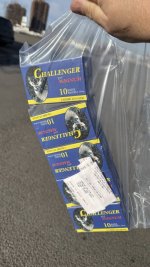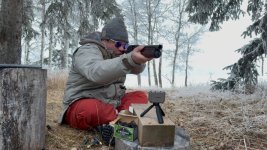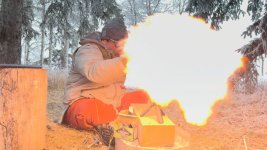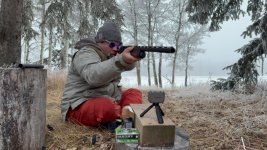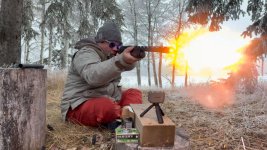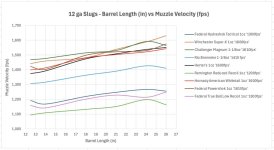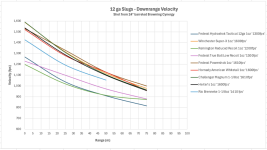Agree wholeheartedly re sweet spot in the dimension of maximum muzzle velocity across slug sample population above.
I think impact velocity is also an important dimension, and my past experience early in my gun/hunting journey via killing some large animals at very close range has imprinted on me that in some circumstances, too much velocity on a rifled slug can be a bad thing.
Shot at a distance of 7 yards, after passing through his shoulder, the 1600fps Winchester super-x slug out of an 18” barreled gun “rolled” around the ribcage of a medium sized young bull a rancher had asked me to kill, and pilled up on the backside, just under the skin without penetrating. It was horrible to see him standing there bawling and a couple more to the head were sadly needed to finish him.
The recovered slug was completely pancaked, like a toonie in diameter, but with a hole through the center. It was flabbergasting to see that kind of deflection, as well as that kind of deformation.
A couple years later I had a black bear hunting horror experience with a Remington Slugger 1600fps foster slug
That experience saw me re-create the phenomenon in ballistics gel for my YouTube channel (
), and I’ll try to re-create it again this summer as I check out terminal performance of a couple of the slugs above.
When I post the down range velocity data over the next few days you’ll be able to see that this style of slug has cr@p aerodynamics, and as such bleed speed very quickly. So much so that the pancake issue really only presents at very close range…like what you would experience if you were in the dreaded bear attack scenario that so stirs our collective Canadian imaginations.
I’m curious if most foster slug manufacturers/packagers use very soft lead, or if there is some variability across the brands in this department? Something to check out in the future. Anyway, the experiences I talk about above have calibrated my personal preference for max impact velocity around 1400fps.
















































